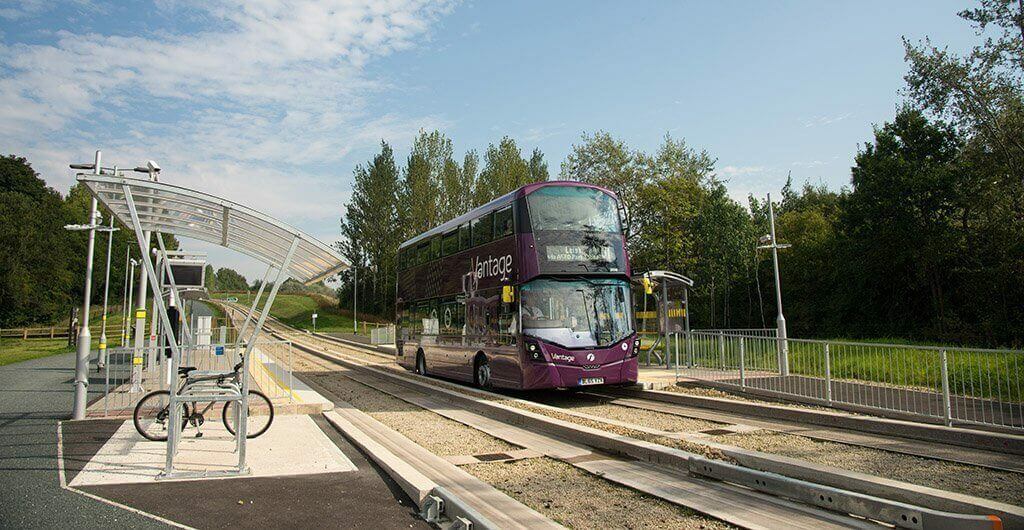Investment in busway networks would address the decline in bus passenger numbers and ease the congestion in Britain’s towns and cities, argues Britpave, the British Cementitious Paving Association, which is the industry focal point for development and promotion of concrete and insitu-cementitious infrastructure.
The latest Government quarterly bus statistics show that from July to September 2019 the number of local bus passenger journeys in England fell by 1% compared to the same period in 2019. Whilst bus passenger continues to decline, traffic congestion over the same period has, according to the latest TomTom Traffic Index, increased by 1% with drivers spending the equivalent of 5.5 days a year stuck in jams.

Britpave believes that both issues are related. Joe Quirke, Britpave Chairman, said: “Increase the number of bus journeys and you decrease the number of car journeys. The answer is a guided busway network that offers assured reliability and punctuality.”
Guided busways provide segregated transport corridors for bus services. These corridors remove the problems of traffic congestion, obstruction by parked vehicles and the use of bus lanes by unauthorised vehicles. This, in turn, provides a more reliable and faster bus journey. Guided busways are suitable for both congestion relief in busy urban areas and for longer distance light rapid transit systems.
Guided busways typically consist of two 180mm high concrete kerbs set 2600mm apart on a concrete pavement. The kerbs act as both the guide for the bus and physical segregation from other traffic. The bus enters the guideway via a funnel arrangement. Once in, the bus is guided by two lateral wheel guides that are connected to the bus steering mechanism. On leaving the guideway, the kerbs terminate equally and release the guide wheels allowing the driver to resume steering.
“The success of busways speak for themselves,” said Quirke. “Last year, the Leigh to Ellenbrook busway carried over three million passenger journeys. It is estimated that the use of the busway has resulted in 580,000 fewer car journeys. The Cambridge to Huntingdon busway is annually delivering nearly four million passenger journeys. This is good news in terms of reducing congestion and improving air quality and should encourage other cities to examine the potential of concrete busways.”

